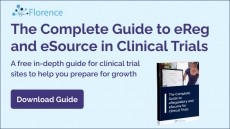Parexel looks at US FDA review timelines post FDAAA
Girgnolo told Outsourcing-pharma that: “There should be some lessons learned from this situation that can be applied to the development and approval of other important therapies, such as those for cancer.”
His comments coincide with the release of Parexel’s “Innovation Imperative in the Safety First Era” report analysing the Food and Drug Administration’s (FDA) approval process in the context of 2008’s FDA Amendments Act (FDAAA).
FDA: REMS impacting on priority reviews
The report shows that, while priority-rated new drug applications (NDAs) continue to gain approval at a higher rate than standard submissions, only 50 per cent of those submitted to the agency last year were cleared, down from 70 per cent in 2007.
Parexel suggests that FDAAA risk evaluation and mitigation strategy (REMS) rules, introduced last year to ensure a drug’s benefits outweighs its risks, are having the biggest impact by “creating new demands late in the FDA review process.”
The firm quotes John Jenkins, director of the CDER’s office of new drugs, on the subject.
“The fact that the REMS requirement might affect priority drugs disproportionately from standards is not surprising since we are less likely to impose as restrictive REMS on a drug that does not offer an advantage over available therapy.”
Non-REMS impact
Other aspects of the FDAAA, such as its powers to enforce post-market studies are also affecting time lines according to Mark Mathieu, Parexel consulting’s director of strategic research, “although it's difficult to quantify or know precisely how significant an impact.”
“Of course, FDAAA, in part through its incorporation of user fees and incremental increases in FDA appropriations, have led to the hiring of hundreds of new agency staff, many of whom are now new reviewers. And there are other ways in which the FDAAA provisions are affecting various aspects of the drug approval process, including the advisory committee process."
Pharma should still focus on innovation
Despite these findings Parexel said it will still advise Pharma industry clients to concentrate on developing new medications, as Grignolo explained.
"We will continue to encourage our clients to focus on true innovation, firstly in the interest of patients and, secondly, in the interest of their business goals, as dependent as they are on regulatory approval but also on acceptance of new drugs by payors in the age of comparative effectiveness."
"The ability to demonstrate true benefit for unmet medical needs has become essential for both regulatory bodies and reimbursement bodies; sponsors should take note of this early in drug discovery and development, and plan accordingly."
Parexel’s full report can be found here.














